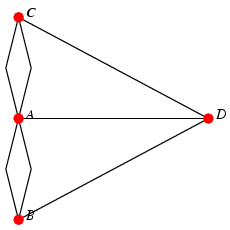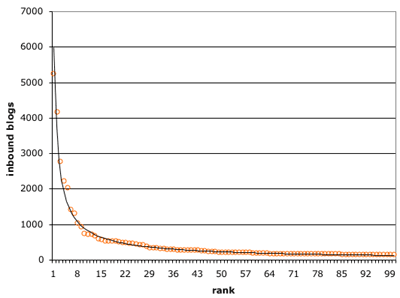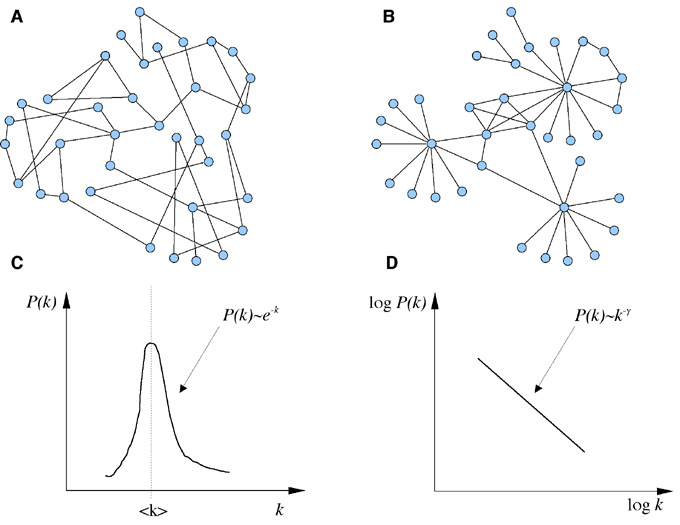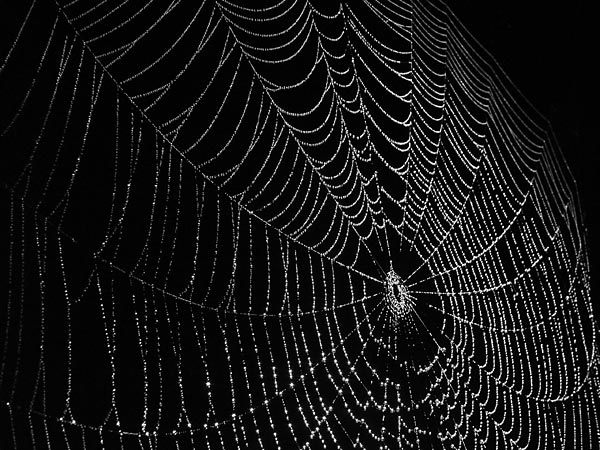Falls from the sky a meteoric shower
Of facts...they lie unquestioned, uncombined.
Wisdom enough to leach us of our ill
Is daily spun: but there exists no loom
to weave it into fabric...
(Murray Gell-Mann)
"Information is information, not matter or energy" (Norbert Wiener)




sb


University of California, produce more information in 3 years than in the preceding 300,000 years. [IBM- Info Services]
INTERNET LIVE STATS
"Information mediates between the material and the abstract, between the real and the ideal" (HCVB, 17)
"Information carries the connotation of activity that is absent from mere form. (...) Information, then, refers to imposing, detecting or communicating a form (...) Information is the transfer of form from one medium to another (...) We can tentatively define information as the communication of relationships" (25)
"In-formation -the infusion of form- the flow of relationships - the communication of messages" (26)
+ Qubit: Information cannot be explained only through addition
Quantum Theory: Blending contradictory attributes is the normal state of affairs of atomic systems; Hence, measurement is a creative act!
Zeilinger: the bit -act of creation- is the nugget that we can get from the qubit -information magnicorpus, substrate-.


Zeilinger: the bit -act of creation- is the nugget that we can get from the qubit -information magnicorpus, substrate-.


Information society: Economic Philosophy, Business Logic, and Democratization? [Techno Utopias vs. Distopias]
Sociedad de la Información: de la falacia lingüística a la tautología; Ideological debates & Popular Culture.
Use of term "information" has come to absurdity
Most groundroots (classical view, von Baeyer) forget meaning
Information & Knowledge diverge (Multiplicity, Spatial, & Temporal)
CONJUNCTION OF SCIENCES:
a) Cybernetics: N. Wiener, self-correcting & self-regulating systems [Guerra], [Wiener, A. Rosenblueth & W. Pitts; Theleology & Circular Casuality: FEEDBACK, governed by entropy] [Cybernetics Society: von Neumann, Mculloch, Bateson, Mead, etc...]
Information: concrete bundles, discrete physically, decontextualized and fluidly moving (8)
b) Systems Theory: "oil flow model" of information: undifferented fluid through communication circuits; Values cannot be "information regulators" within a system; Mening is a matter of form, not amount ---- Message & preexisting form of the reciever
c) Computer Sciences: Cognitive Science & AI; Descartes: Information processing device: Rationalism [Edelman, Second Nature: discard Cartesian dualism]; Ideas as objects & Intelligence as their Manipulator [Gitelman, Record and Document; Types & Tokens]: Communications Metaphor.
d) Information Theory: Transmission & Engineering problems; "Information has to become a singular element with unique character"
Information Economics: Economists reduce information from its semantic content; 2 functions: resource, INPUT (control of market & reduction of uncertainty, mostly in prices; OUTPUT, materialized & sold as a commodity (KEY ELEMENT of the so called Information Society); Producer Consumer in relation to information consumption [Tapscott's Prosumer & IT]; Disorganizing Information: Can we solve the destruction of meaning?
"Information sciences operates within a binary logic of reflection which results in a multiple paths, but these paths are always circumscribed by laws of combination" (Delleuze & Guattari) ---- Fragmented time & space of information flows.
Information: disorganizes, interrupts, remain & disperse; Is an heterogeneous remapping of space and time
TEORÍA DE REDES
The Random Universe
Leonard Euler.
“Graph theory is the basis of our thinking about networks” (10).
Koningsberg Bridges.1736. 4 areas of land, and 7 bridges connecting them.

Graph: collection of nodes connected by links.
 With a configuration of a link, comes a set of new possibilities.
With a configuration of a link, comes a set of new possibilities.
Paul Erdós & Alfred Rényi: At a party with 10 guests, none of whom initially knows one another, ties between assistants emerge during interaction. Even if not everyone has talked to each other by the end of the party, a cluster will consolidate, connecting all the attendees with either direct or indirect paths. Therefore, all guests will have formed at least one link.
+ Six degrees of separation
Frigyes Karinthy, Everything is different, 1929. Chains or “Lancszemek”. (Karinthy quote, pg. 26).
Stanley Milgram, 1967. “Six degrees of separation” ---- John Guarre, 1991.
We live in a small world: society is a very dense web.
The magic comes from the links
Small Worlds: Mark Granovetter Strong and Weak Ties.
“The clustering coefficient tells you how closely knit your circle of friends is” (47)
“Humans have an inborn desire to form cliques and clusters that offer familiarity, safety, and intimacy” (49-50).
Watts and Strogatz: “only a few extra links are sufficient to drastically decrease the average separation between the nodes”
+ Hubs and Connectors
Malcom Gladwell, The Tiping Point. There are people that function as connectors, the have the knack of making acquaintances.
Random worldview demystified
“The most intriguing result of our Web-mapping project was the complete absence of democracy, fairness, and egalitarian values of the Web” (56)
“Hubs are the strongest argument against the utopian vision of an egalitarian cyberspace” (58)
“How do hubs appear? How many of them are expected in a given network? Why did all previous models fail to account for them?” (64)
+ 80/20 Rule
 “Each node attracts new links at a rate proportional to the number of its links” (88)
“Each node attracts new links at a rate proportional to the number of its links” (88)
[Metcalf vs. Reed]
“It tells us that nodes still acquire links following a power law, tB. But the dynamic exponent, B, which measures how fast a node grabs new links, is different for each node. It is proportional to the nodes fitness” (97)
+ Achilles´Heel

“Vulnerability due to interconnectivity” (110)
“It seems that nature strives to achieve robustness through interconnectivity” (111)
+ Viruses and Fads
+ The Awakening Internet
“Parasitic computing demonstrated that we can enslave computers located thousands of miles away, forcing them to perform computation on our behalf. This fundamental vulnerability of the Internet raised a barrage of computational, ethical, and legal questions” (157)
+ The Fragmented Web
“They wisely [the robots] avoid sharing the crowded Euclidean space with us, where real estate is at a premium. The robots of the twenty first century are invisible and immaterial. They have taken up residence in the virtual world, which allows them to hop with enviable ease from continent to continent” (161).
Ovelapping Communities
Lawrence Lessig: Code & Architecture
“Its architecture is far more richer than the sum of its parts” (174)
“Without robots it will be a black hole” (178)
+ The Map of Life
“If we want to understand life (...) we must think in networks” (180)
+ Network Economy
“ In a network economy the hubs must get bigger as the network grows” (200)
“As companies face an information explosion and an unprecedented need for flexibility in a rapidly changing marketplace, the corporate model is in the midst of a complete makeover” (201)
“As research, innovation, product development, and marketing become more and more specialized and divorced from each other, we are converging to a network economy in which strategic alliances and partnerships are the means for survival in all industries” (208)

+ Scale-Free/Modular Networks
Sociedad de la Información: de la falacia lingüística a la tautología; Ideological debates & Popular Culture.
Use of term "information" has come to absurdity
Most groundroots (classical view, von Baeyer) forget meaning
Information & Knowledge diverge (Multiplicity, Spatial, & Temporal)
CONJUNCTION OF SCIENCES:
a) Cybernetics: N. Wiener, self-correcting & self-regulating systems [Guerra], [Wiener, A. Rosenblueth & W. Pitts; Theleology & Circular Casuality: FEEDBACK, governed by entropy] [Cybernetics Society: von Neumann, Mculloch, Bateson, Mead, etc...]
Information: concrete bundles, discrete physically, decontextualized and fluidly moving (8)
b) Systems Theory: "oil flow model" of information: undifferented fluid through communication circuits; Values cannot be "information regulators" within a system; Mening is a matter of form, not amount ---- Message & preexisting form of the reciever
c) Computer Sciences: Cognitive Science & AI; Descartes: Information processing device: Rationalism [Edelman, Second Nature: discard Cartesian dualism]; Ideas as objects & Intelligence as their Manipulator [Gitelman, Record and Document; Types & Tokens]: Communications Metaphor.
d) Information Theory: Transmission & Engineering problems; "Information has to become a singular element with unique character"
Information Economics: Economists reduce information from its semantic content; 2 functions: resource, INPUT (control of market & reduction of uncertainty, mostly in prices; OUTPUT, materialized & sold as a commodity (KEY ELEMENT of the so called Information Society); Producer Consumer in relation to information consumption [Tapscott's Prosumer & IT]; Disorganizing Information: Can we solve the destruction of meaning?
"Information sciences operates within a binary logic of reflection which results in a multiple paths, but these paths are always circumscribed by laws of combination" (Delleuze & Guattari) ---- Fragmented time & space of information flows.
Information: disorganizes, interrupts, remain & disperse; Is an heterogeneous remapping of space and time
TEORÍA DE REDES
The Random Universe
Leonard Euler.
“Graph theory is the basis of our thinking about networks” (10).
Koningsberg Bridges.1736. 4 areas of land, and 7 bridges connecting them.

Graph: collection of nodes connected by links.
 With a configuration of a link, comes a set of new possibilities.
With a configuration of a link, comes a set of new possibilities.Paul Erdós & Alfred Rényi: At a party with 10 guests, none of whom initially knows one another, ties between assistants emerge during interaction. Even if not everyone has talked to each other by the end of the party, a cluster will consolidate, connecting all the attendees with either direct or indirect paths. Therefore, all guests will have formed at least one link.
+ Six degrees of separation
Frigyes Karinthy, Everything is different, 1929. Chains or “Lancszemek”. (Karinthy quote, pg. 26).
Stanley Milgram, 1967. “Six degrees of separation” ---- John Guarre, 1991.
We live in a small world: society is a very dense web.
The magic comes from the links
Small Worlds: Mark Granovetter Strong and Weak Ties.
“The clustering coefficient tells you how closely knit your circle of friends is” (47)
“Humans have an inborn desire to form cliques and clusters that offer familiarity, safety, and intimacy” (49-50).
Watts and Strogatz: “only a few extra links are sufficient to drastically decrease the average separation between the nodes”
+ Hubs and Connectors
Malcom Gladwell, The Tiping Point. There are people that function as connectors, the have the knack of making acquaintances.
Random worldview demystified
“The most intriguing result of our Web-mapping project was the complete absence of democracy, fairness, and egalitarian values of the Web” (56)
“Hubs are the strongest argument against the utopian vision of an egalitarian cyberspace” (58)
“How do hubs appear? How many of them are expected in a given network? Why did all previous models fail to account for them?” (64)
+ 80/20 Rule
- Vilfredo Pareto....1900 Gustav von Schmoller asks Pareto: “Are there laws in economics?”
- 80 percent of the profits are produced by 20 percent of the employees
- Extrapolating the notion towards network theory: 80 percent of the links are concentrated by 20 percent of the nodes.
- Power Laws vs. Bell Curves

- Many small events coexists with a few large events
- Scale Free Networks
- Water Molecules and Brownian Movement (Order and Entropy)
- Theory of Phase Transition, “powerful forces of self organization and is paved by power laws, which determine self-organization in complex systems” (77)
- Features of Scale Free-Networks: Growth (beyond static models), Preferential Attachment (When choosing between two pages, one with twice as many links as the other, about twice as many people link to the more connected page (85))
 “Each node attracts new links at a rate proportional to the number of its links” (88)
“Each node attracts new links at a rate proportional to the number of its links” (88)[Metcalf vs. Reed]
- Scale-Free Model cannot explain the evolution of a complex system, hence, it is constricted to its development, not its reproduction [Dawkings; Generative Systems; Cómo mezclar las exigencias? ---- Trabajo del módulo ---- Can we incorporate entropy to a delimitated approach?] ---- “The New Kid on the Block Effect” and the fitness notion within competitive environments
“It tells us that nodes still acquire links following a power law, tB. But the dynamic exponent, B, which measures how fast a node grabs new links, is different for each node. It is proportional to the nodes fitness” (97)
- Can we identify a topology for information?
+ Achilles´Heel

- Topological robustness is a feature of networks.
“Vulnerability due to interconnectivity” (110)
“It seems that nature strives to achieve robustness through interconnectivity” (111)
- Crash of hubs
+ Viruses and Fads
- Diffusion through Networks
- Innovations (The Myths of Innovation, Scott Berkun)
- Spreading rate
- Critical threshold: where innovation spreads
+ The Awakening Internet
- Paul Baran
- http://www.peacockmaps.com/
- [Terrence Sejnowski, Edge´s “What is your dangerous Question”]
“Parasitic computing demonstrated that we can enslave computers located thousands of miles away, forcing them to perform computation on our behalf. This fundamental vulnerability of the Internet raised a barrage of computational, ethical, and legal questions” (157)
+ The Fragmented Web
“They wisely [the robots] avoid sharing the crowded Euclidean space with us, where real estate is at a premium. The robots of the twenty first century are invisible and immaterial. They have taken up residence in the virtual world, which allows them to hop with enviable ease from continent to continent” (161).
- They do the most boring job: read and index millions of web pages [ The Machine is Us/ing Us]
- Territories escape their reach.
- Hierarchies & Communities ( continents: Central Core, IN continent, OUT continent, Tubes, Tendrils, Islands. pg. 166)
Ovelapping Communities
Lawrence Lessig: Code & Architecture
“Its architecture is far more richer than the sum of its parts” (174)
“Without robots it will be a black hole” (178)
+ The Map of Life
“If we want to understand life (...) we must think in networks” (180)
- Intra-cellular network organization
- Genes are part of this celular network
- Diameter of a Network: degree of separation between nodes
- History is awarded by scale-free topologies
- Map the network behind cellular biology in order to understand the vulnerabilities and possibilities of approaching the “Achilles’ Heel”
+ Network Economy
“ In a network economy the hubs must get bigger as the network grows” (200)
“As companies face an information explosion and an unprecedented need for flexibility in a rapidly changing marketplace, the corporate model is in the midst of a complete makeover” (201)
“As research, innovation, product development, and marketing become more and more specialized and divorced from each other, we are converging to a network economy in which strategic alliances and partnerships are the means for survival in all industries” (208)
- Links quantify interactions between institutions

- Real networks are not static & self-organizing: change and randomness: growth plays a crucial role
- Scale-Free Networks: language, proteins, sexual relationships, transistors, cellular metabolism, Internet, Hollywood, WWW, Scientists, Economy, etc...
- “Irregular army”: terrorist networks
+ Scale-Free/Modular Networks
- Hierarchical modularity makes multitasking possible

No hay comentarios:
Publicar un comentario